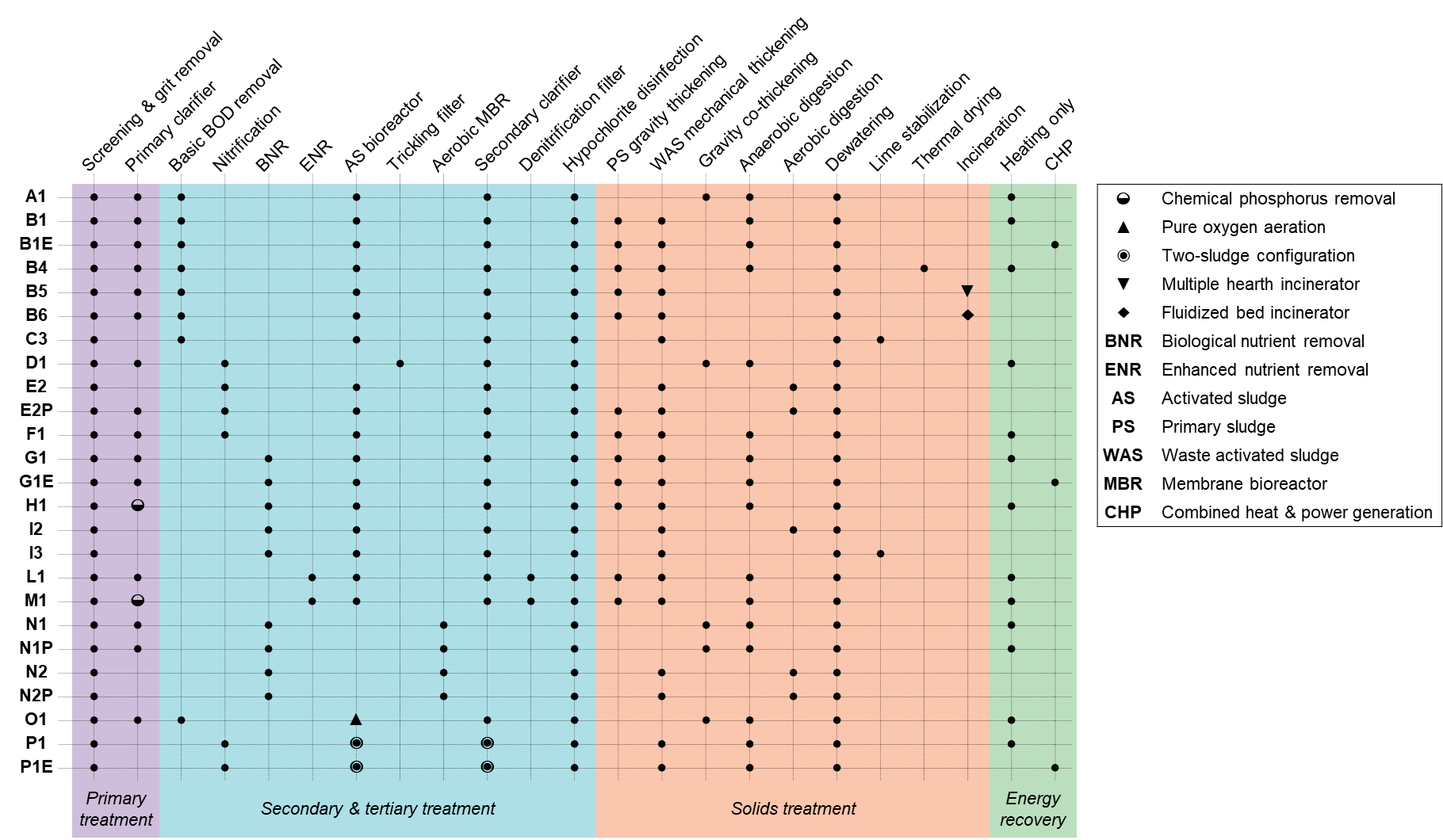Systems¶
This page documents the systems that have been/is being developed using QSDsan with links to the source codes in GitHub and publications.
Benchmark Simulation Models¶
The Modelling and Integrated Assessment (MIA) Specialist Group of the International Water Association has established benchmark simulation models (BSMs) to provide a consistent environment for wastewater treatment plant (WWTP)/water resource recovery facility (WRRF) evaluation (see BSM webpage and MATLAB implementation and report).
When publishing the paper that introduces QSDsan (Li and Zhang et al., 2022), we validated the process modeling and dynamic simulation capacities of QSDsan through BSM1 (bsm1 EXPOsan module, bsm1 archived codes). Work is currently underway to implement BSM2 in QSDsan.
Water Resource Recovery Facilities¶
Work is underway to model the 25 distinct Water Resource Recovery Facility (WRRF) configurations identified as “typical” across North America (Tarallo et al., 2015; Zhang et al., In Prep, 2024).

Other Systems¶
A variety of other sanitation and resource recovery systems have been developed using QSDsan, including:
Non-sewered sanitation systems (NSSSs) including:
Biogenic Refinery
Publication: Rowles et al., 2022
Bwaise
Publication: Trimmer et al., 2020; Li and Zhang et al., 2022
bwaise Trimmer et al archived codes; bwaise Li and Zhang et al archived codes
Eco-San: eco_san EXPOsan module
NEWgenerator (under NDA)
Publication: Watabe et al., 2023
Reclaimer: reclaimer EXPOsan module
SCG Zyclonic (under NDA): scg_zyclonic EXPOsan module
Conventional activated sludge process
Publication: Shoener et al., 2016
Hydrothermal systems for fuel and fertilizer production from wet organic wastes
Publication: Feng et al., 2024.
Modular encapsulated two-stage anaerobic biological (METAB) system
Manuscript: Zhang et al., Sustainable design of a modular anaerobic system for distributed energy recovery from industrial wastewaters, In Prep.
EcoRecover system: microalgae-based tertiary P recovery process
Manuscript: Kim et al., Development and validation of a Phototrophic-Mixotrophic Process Model (PM2) and a process simulator for microalgae-based wastewater treatment, In Prep.
- Notes:
“Under NDA” indicates that the system is under non-disclosure agreement with the technology design team and unfortunately we are not able to share the codes in full at this stage. The source link code will lead to a private repository that only individuals who have signed the NDA can access.
“Archived codes” are the codes used when the linked literature is published.